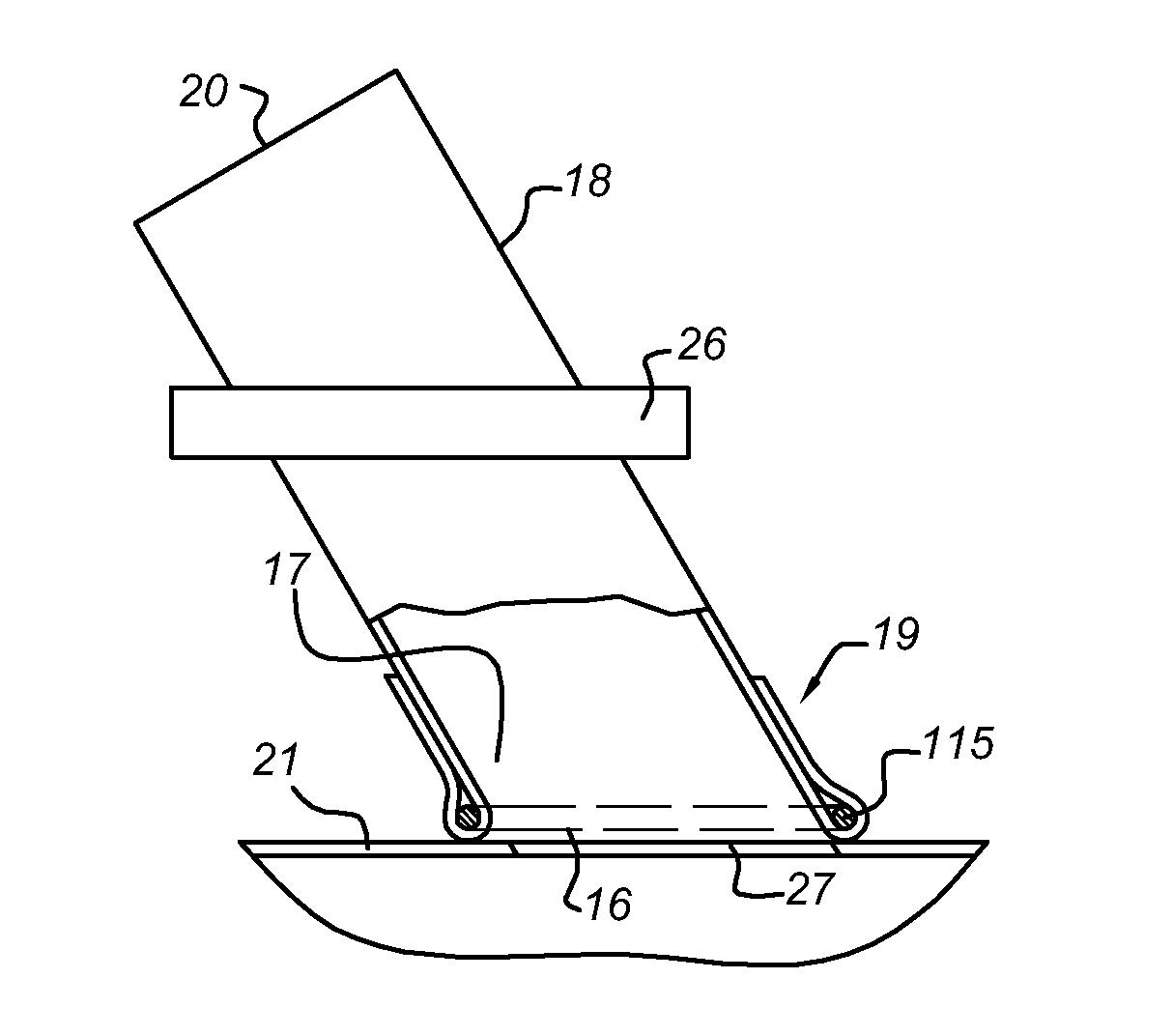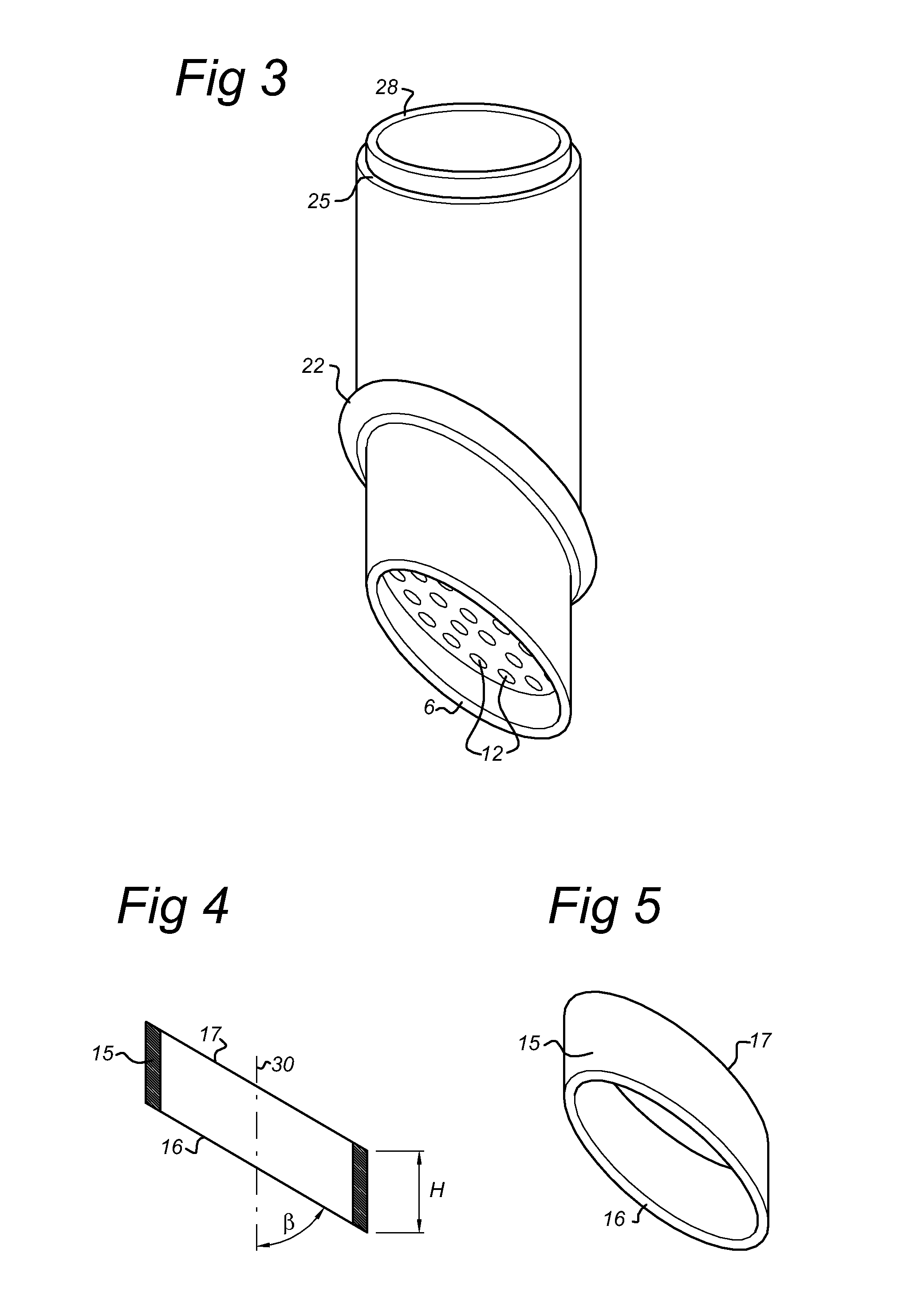Laser catheter for bypass surgery and assembly comprising said catheter
a laser catheter and bypass surgery technology, applied in catheters, intravenous devices, medical science, etc., can solve the problems of failure of cutting procedure, burnt a—not intended—whole in the graft vessel, etc., and achieve the effect of preventing the tilting of the laser catheter
- Summary
- Abstract
- Description
- Claims
- Application Information
AI Technical Summary
Benefits of technology
Problems solved by technology
Method used
Image
Examples
Embodiment Construction
[0034]FIGS. 1, 2 and 3 show a laser catheter 1 according to the invention. The distal part 2 of the laser catheter 1 is provided with a tubular arrangement 3 of optical fibres 4. The optical fibres 4 have distal ends 5, which together define a ring-shaped light emergence surface 6. When a laser source is connected to the proximal ends 28 of the optical fibres 4, a laser light beam will emit from each of these distal ends 5 of the optical fibres 4. The distal ends of the optical fibres 4 extend parallel to the longitudinal axis 8 of the catheter, so that the emitted laser light beams will extend parallel to the longitudinal axis 8 in the distal direction indicated by arrow D. This results in a tubular bundle of laser light beams in the distal direction D of the catheter.
[0035]The laser catheter 1 further comprises a casing surrounding the tubular arrangement 3 of optical fibres. The tubular arrangement 4 encloses a channel 9. The proximal end 29 of the channel 9 can be connected to a...
PUM
 Login to View More
Login to View More Abstract
Description
Claims
Application Information
 Login to View More
Login to View More - R&D
- Intellectual Property
- Life Sciences
- Materials
- Tech Scout
- Unparalleled Data Quality
- Higher Quality Content
- 60% Fewer Hallucinations
Browse by: Latest US Patents, China's latest patents, Technical Efficacy Thesaurus, Application Domain, Technology Topic, Popular Technical Reports.
© 2025 PatSnap. All rights reserved.Legal|Privacy policy|Modern Slavery Act Transparency Statement|Sitemap|About US| Contact US: help@patsnap.com



